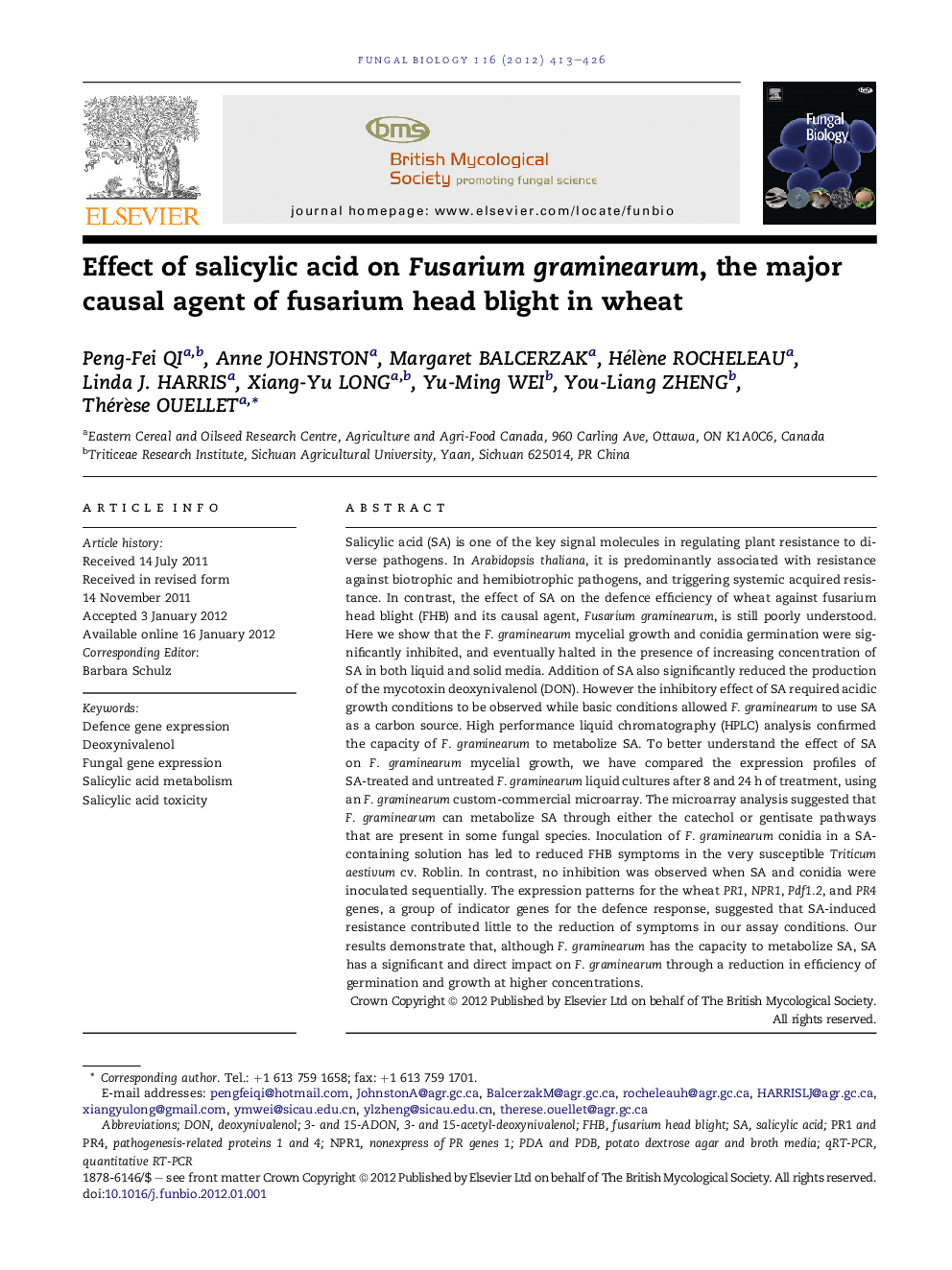| کد مقاله | کد نشریه | سال انتشار | مقاله انگلیسی | نسخه تمام متن |
|---|---|---|---|---|
| 4357251 | 1300044 | 2012 | 14 صفحه PDF | دانلود رایگان |

Salicylic acid (SA) is one of the key signal molecules in regulating plant resistance to diverse pathogens. In Arabidopsis thaliana, it is predominantly associated with resistance against biotrophic and hemibiotrophic pathogens, and triggering systemic acquired resistance. In contrast, the effect of SA on the defence efficiency of wheat against fusarium head blight (FHB) and its causal agent, Fusarium graminearum, is still poorly understood. Here we show that the F. graminearum mycelial growth and conidia germination were significantly inhibited, and eventually halted in the presence of increasing concentration of SA in both liquid and solid media. Addition of SA also significantly reduced the production of the mycotoxin deoxynivalenol (DON). However the inhibitory effect of SA required acidic growth conditions to be observed while basic conditions allowed F. graminearum to use SA as a carbon source. High performance liquid chromatography (HPLC) analysis confirmed the capacity of F. graminearum to metabolize SA. To better understand the effect of SA on F. graminearum mycelial growth, we have compared the expression profiles of SA-treated and untreated F. graminearum liquid cultures after 8 and 24 h of treatment, using an F. graminearum custom-commercial microarray. The microarray analysis suggested that F. graminearum can metabolize SA through either the catechol or gentisate pathways that are present in some fungal species. Inoculation of F. graminearum conidia in a SA-containing solution has led to reduced FHB symptoms in the very susceptible Triticum aestivum cv. Roblin. In contrast, no inhibition was observed when SA and conidia were inoculated sequentially. The expression patterns for the wheat PR1, NPR1, Pdf1.2, and PR4 genes, a group of indicator genes for the defence response, suggested that SA-induced resistance contributed little to the reduction of symptoms in our assay conditions. Our results demonstrate that, although F. graminearum has the capacity to metabolize SA, SA has a significant and direct impact on F. graminearum through a reduction in efficiency of germination and growth at higher concentrations.
► Salicylic acid (SA) is toxic to Fusarium graminearum at high concentrations.
► F. graminearum can metabolize SA.
► List of F. graminearum candidate genes for SA degradation.
Journal: Fungal Biology - Volume 116, Issue 3, March 2012, Pages 413–426